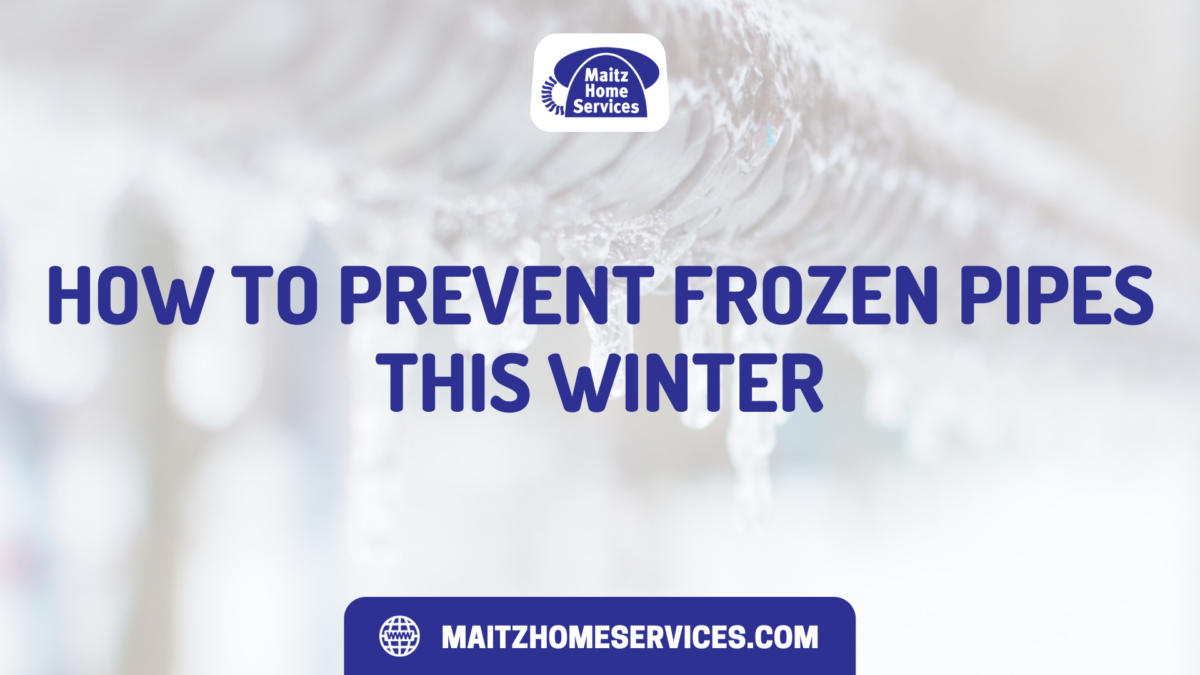
Residential plumbing consists of a network of water supply lines that deliver water to all the fixtures throughout a home and drain pipes that cart away wastewater. Most of this network is hidden behind walls and under the floor and so is often ignored. Many homeowners don’t think twice about their plumbing until something goes wrong.
Along with the many things a homeowner has to do to prepare for winter, household pipes need to be prepped for freezing temperatures, too. If not, they could be at risk of freezing and bursting. Read on to learn how to prevent frozen pipes this winter.
The Consequences of Frozen Pipes
Frozen pipes can lead to costly, calamitous consequences. If a frozen pipe is steadily leaking water, unbeknownst to the homeowner, it can drive the water bill up astronomically over time. A slow, sneaky leak behind walls or under floors can be just as devastating as a sudden flood.
If a water supply line freezes and bursts, water will continue to gush from the pipe until the supply is turned off. The resulting flood can cause serious damage to floors, walls, and furniture. Repairing the damage of a flood after a burst pipe can be very expensive.
Luckily, there are ways to prevent frozen pipes!
How to Prevent Frozen Pipes
The water inside a home’s pipes can freeze, and when water freezes, it expands. This often creates enough pressure that the pipe will crack or burst open. From that fissure, water will continue to spill forth.
A good method to prevent burst pipes in an emergency is to let the water drip. To do this, turn on the cold water to a slow drip at a faucet farthest away from the main water supply. This will create the necessary space inside the pipe for the water to expand in case it does freeze.
Of course, it is best to prevent the pipes from freezing in the first place. A safe practice is to keep the home moderately warm at all times, never setting the thermostat below 55 degrees Fahrenheit. Even if the home will be vacant for a long time, the furnace should still run to keep the house warm. A programmable thermostat is an energy-efficient way to maintain the temperature. If a power outage is a concern, it may be wise to have a generator available to run the heater in case of an emergency.
Another step to take to keep pipes from freezing and bursting is to insulate the pipes. Pipes in exposed areas of the home such as in attics, crawlspaces, the basement, and the garage are most susceptible to freezing and should be insulated before winter.
Types of Pipe Insulation
There are a few different types of pipe insulation available on the market today. Those most commonly used include:
- Heat tape: While not strictly insulation, this electric-powered cord generates heat that keeps pipes from freezing. This can be a foolproof choice in areas where pipes are most vulnerable to freezing.
- Fiberglass insulation: Made of the same stuff as the insulation batts between the walls, this insulation comes in thin strips that can be wrapped around the pipe. Useful on pipes of all sizes, this type also prevents sweating and dripping on hot water supply lines.
- Foam insulation: This type usually comes in a long tube of foam with a slit cut down the middle. Although less flexible than fiberglass, it generally offers more protection with a higher R-value.
For help choosing which pipe insulation will work best in the home, and for other tips on how to prepare a home’s plumbing system for winter, consult a trusted local plumbing company.
About Maitz Home Services
Maitz Home Services has been providing plumbing services in Allentown, PA for over 80 years. We offer burst pipe repair, drain cleaning, water treatment services, furnace repair and replacement, air conditioner tune-ups and maintenance, and much more. Give us a call today or book online for honest recommendations, flat-rate pricing, and a 100% customer satisfaction guarantee.

